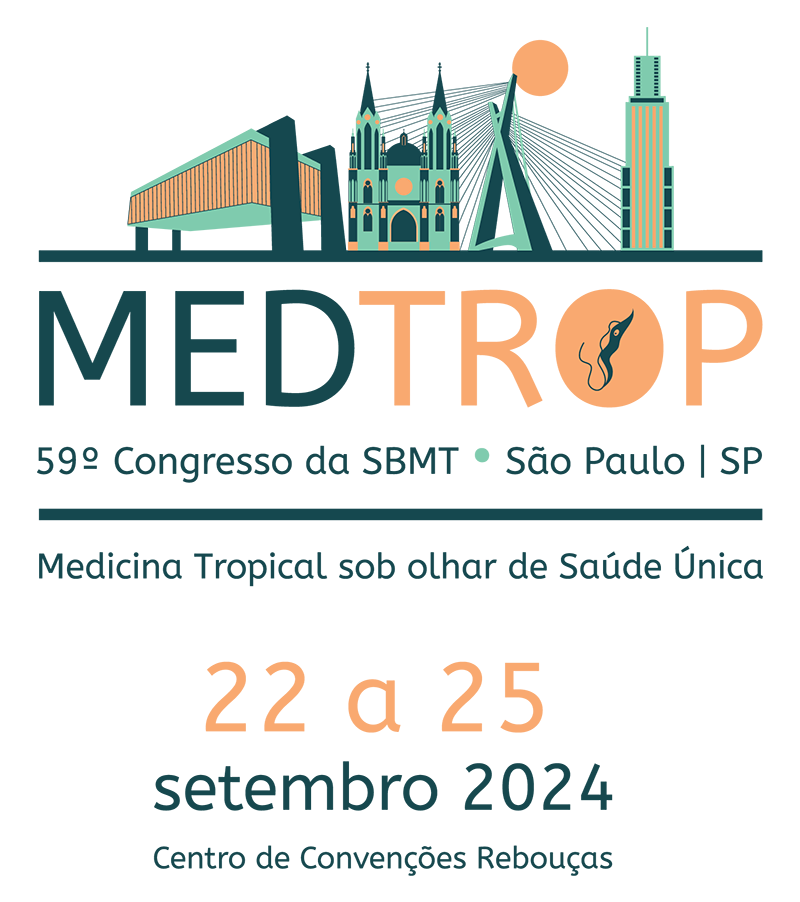Dados do Trabalho
Título
Exploring the Intersection of Landscape, Biodiversity, and Trypanosoma cruzi Infection in Fragmented Atlantic Rainforest Environments: An Analysis Utilizing Machine Learning
Introdução
The landscape transformation can decrease niche-specific mammals diversity, which tend to be replaced by generalist species. If these species are potential reservoirs of T. cruzi, an increase in the transmission of this parasite is expected. Marsupials and rodents serve as models for understanding this effect.
Objetivo (s)
This study aims to investigate the contributions of landscape features, morphological characteristics and the composition of marsupials and rodents fauna to T. cruzi infection (based on parasitological diagnosis and/or serological) in the Atlantic Rainforest, using a machine learning approach.
Material e Métodos
For this purpose, a database with 3,268 occurrences of marsupials and rodents distributed in 21 municipalities was compiled (CEUA LW-39/14 and 13373 MMA/ICMBio/SISBIO). Two spatial delimitation scales were evaluated, 3 km and 10 km buffers, generating 31 and 19 communities, respectively. Fauna diversity was assessed using six metrics, while seven landscape metrics derived from the geometry of land use classes obtained from the MapBiomas platform were utilized.
Resultados e Conclusão
For both buffers higher body mass strongly indicates the likelihood of T. cruzi infection. Tail/Body ratio also plays a significant role, although lower and higher values can impact T. cruzi infection within the 3km, while only lower values have influence within a 10km. In the 3km, both Fisher's Alpha and the Menhinick index suggest that lower diversity and species richness are associated with a risk of T. cruzi infection, meaning areas with fewer diverse species are more susceptible to positivity. Conversely, In the 10km range a higher proportion of rodents is a crucial predictor, with higher values indicating an increased likelihood of infection. For 3km, higher values of Urban fractal dimension, reflecting increased complexity in urban landscapes, favor the identification of infection for T. cruzi. Similarly, a higher percentage of similar adjacencies in urban environments is associated with an increased likelihood of T. cruzi positivity for 10km. In concordance, lower values of fractal dimension in forest environments are linked to an increased T. cruzi positivity for 10km. These results highlight the complex interactions between host ecology, landscape, and T. cruzi infection dynamics in fragmented environments. Thus, these findings can help prioritize intervention areas in the enzootic transmission cycle of T. cruzi, especially where increased transmission is expected due to habitat fragmentation.
Palavras Chave
Trypanosoma cruzi; Landscape; Biodiversity; Machine Learning.
Área
Eixo 01 | Ambiente e saúde
Prêmio Jovem Pesquisador
2.Concorrer na categoria - Mestrado
Autores
Lucas Fernando Tinoco Leonardo, Bernardo Rodrigues Teixeira, Flávio Luis de Mello, Cecilia Siliansky de Andreazzi, Luis A. Martínez-Vaquero, Gilbert Queiroz dos Santos, Ana Maria Jansen, Samanta Cristina das Chagas Xavier

 Português
Português English
English